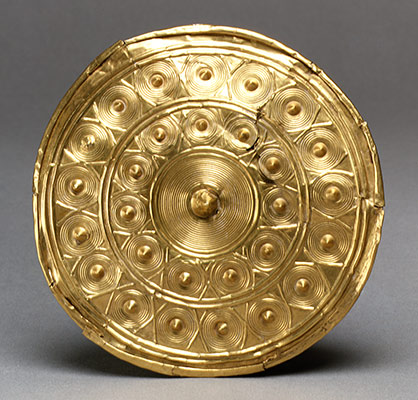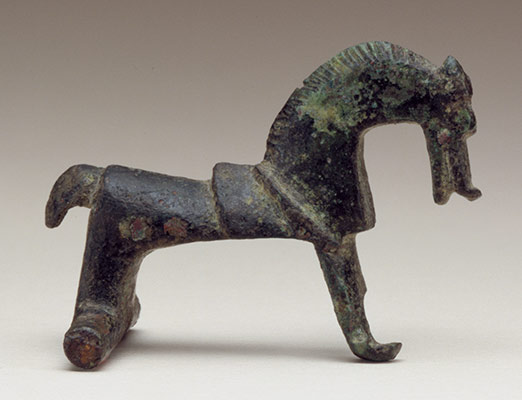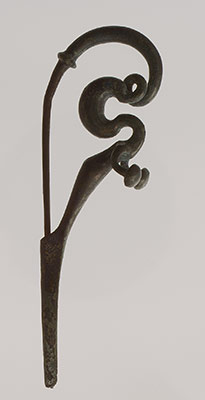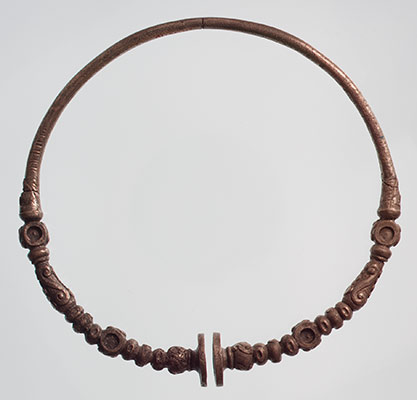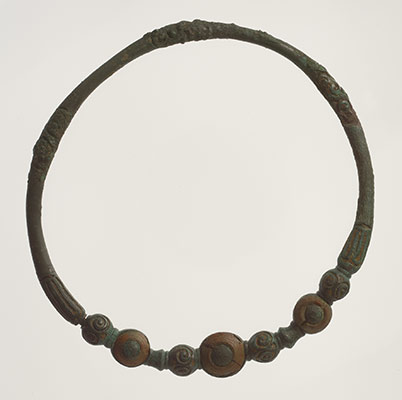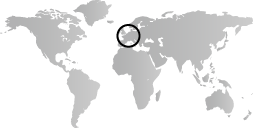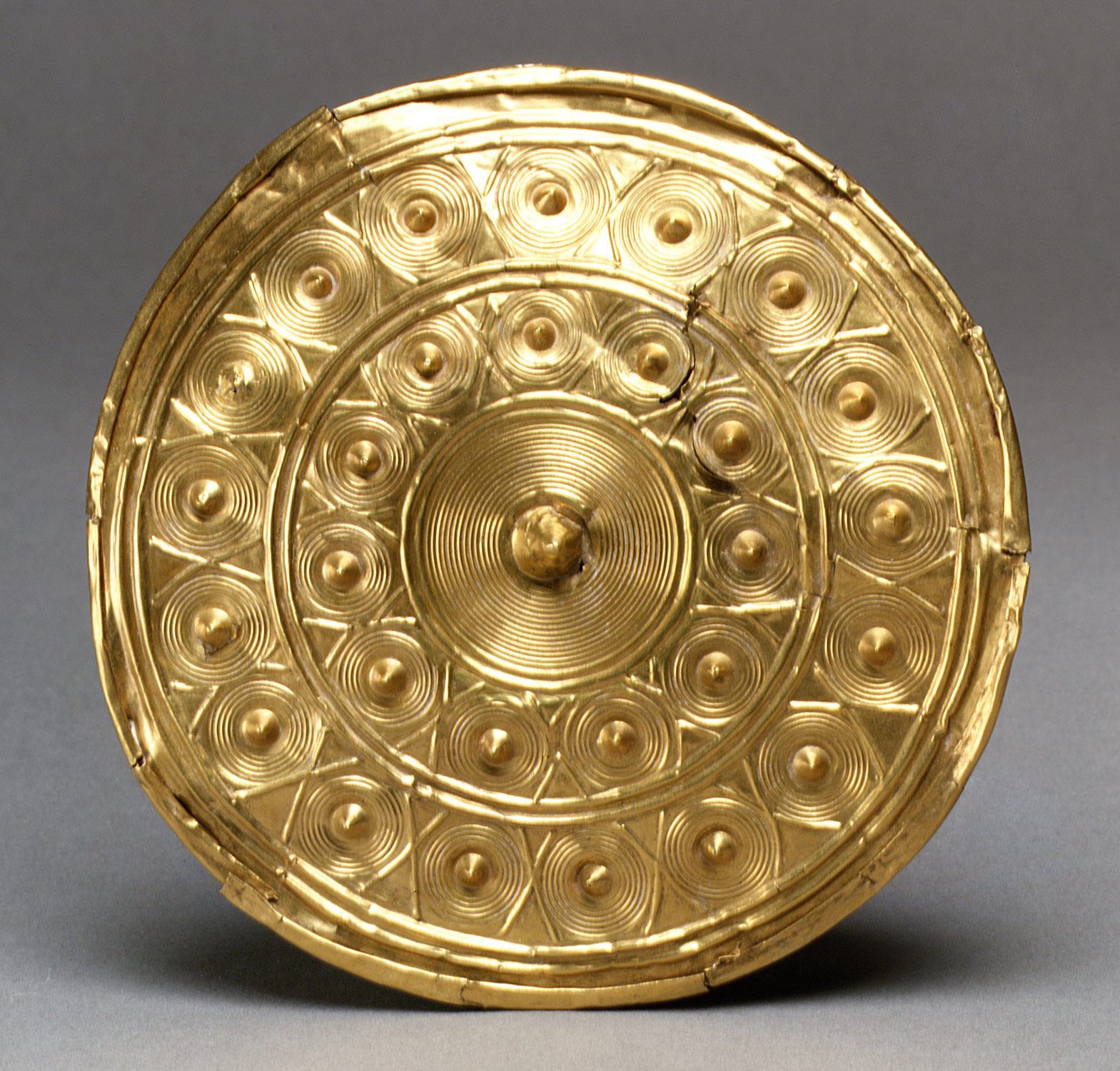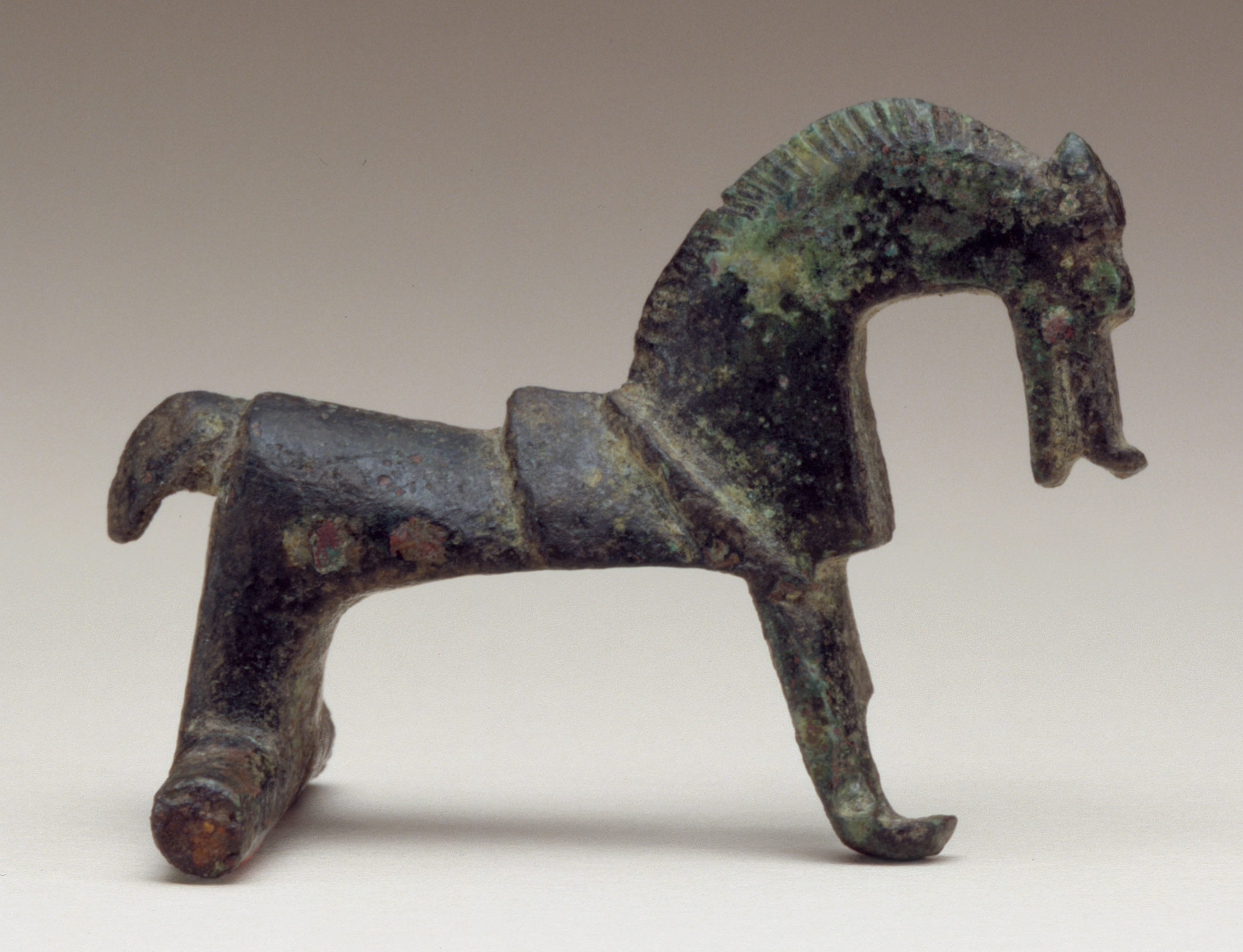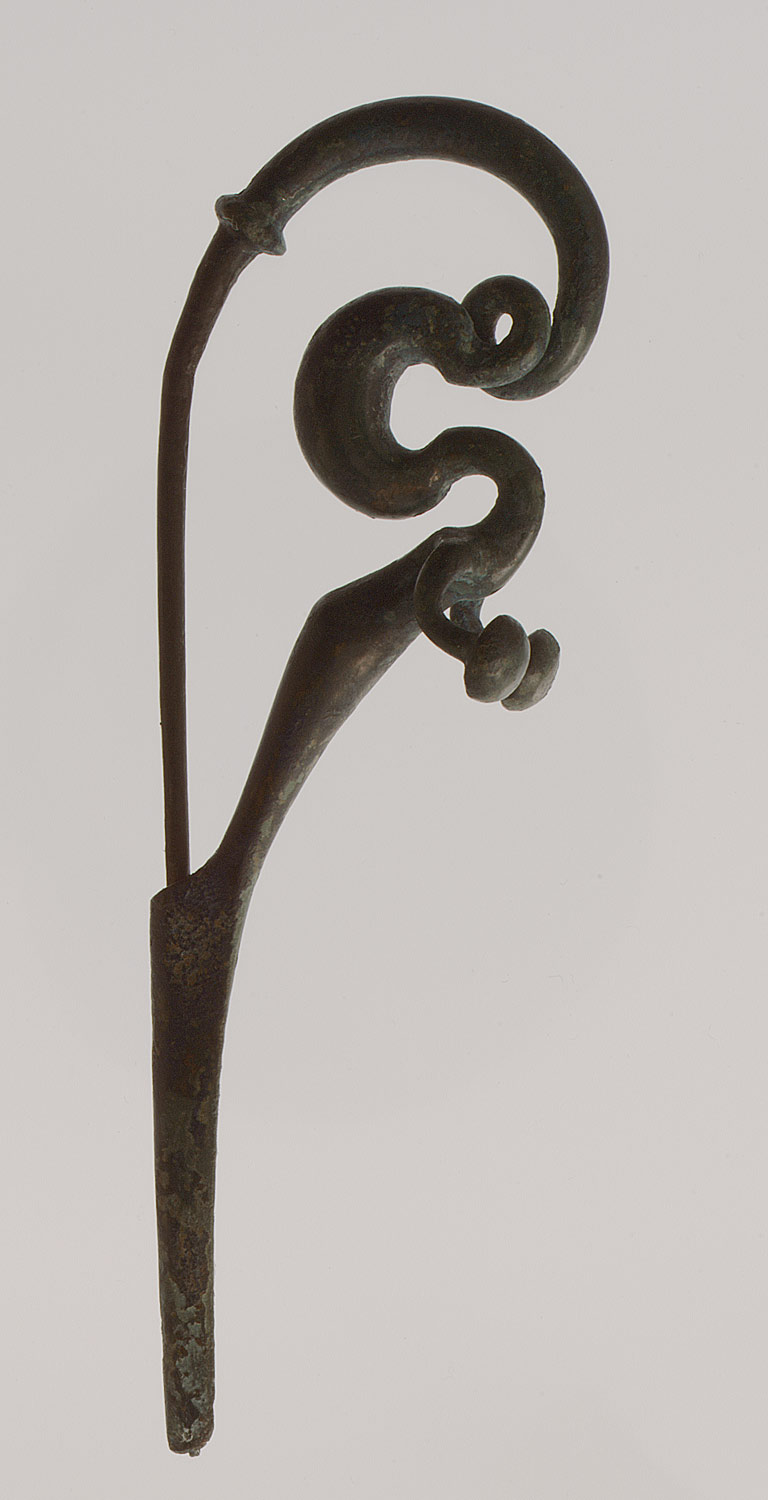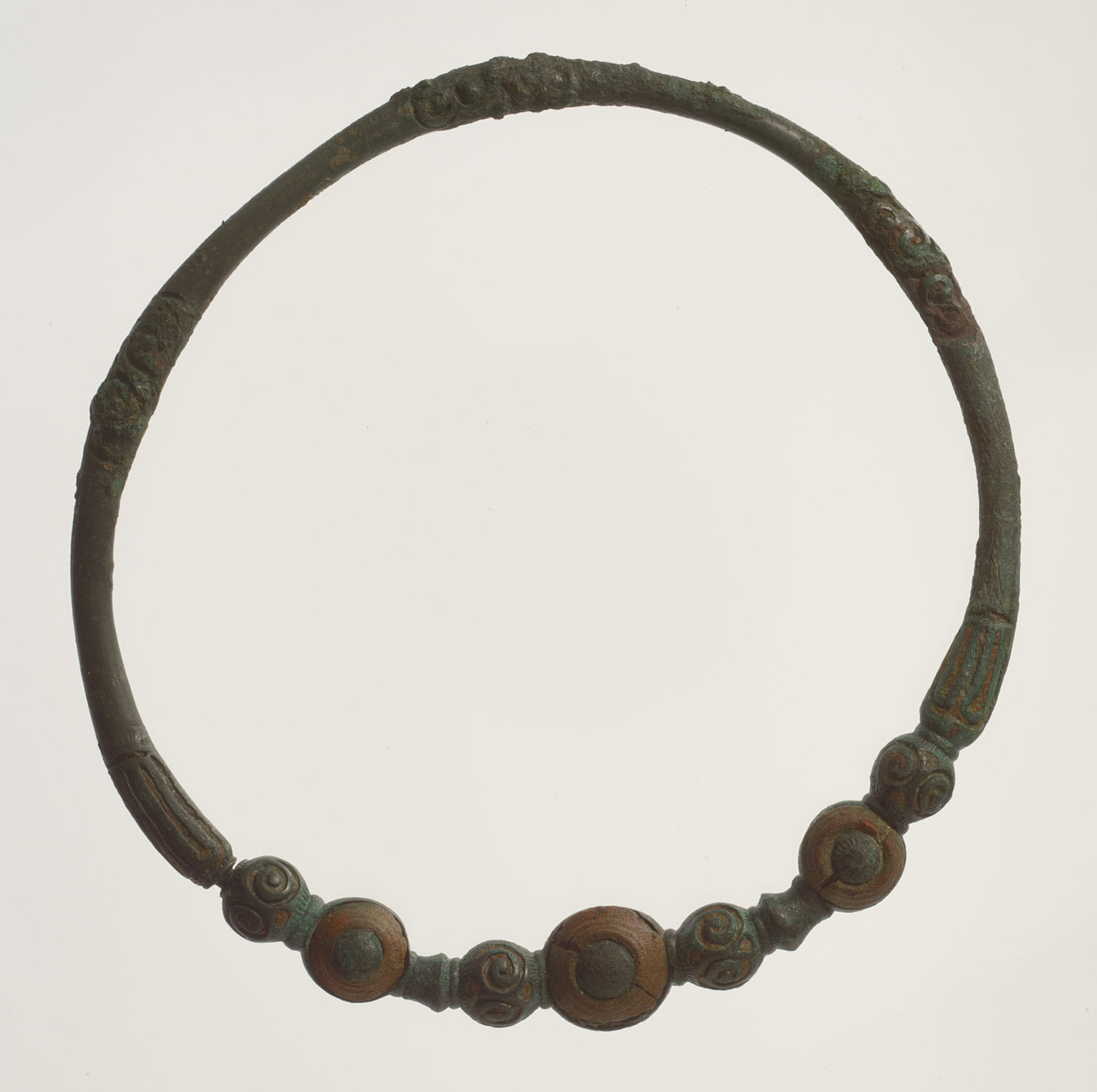In the period from 1000 B.C. to 1 A.D., the Celts conquer and settle much of western and central Europe, acquiring wealth through raids and conquests. They master sophisticated metalworking technology and engage in trade with distant partners. By the end of the period, Celtic society has attained relative stability, punctuated by increasing conflict with armies of the Roman empire.
Western and Central Europe, 1000 B.C.–1 A.D.
Timeline
1000 B.C.
750 B.C.
750 B.C.
500 B.C.
500 B.C.
250 B.C.
250 B.C.
1 A.D.
Overview
Key Events
-
ca. 5000–900 B.C.
Rock faces in the Alps, such as Val Camonica in northern Italy, Monte Bego in France, and Totes Gebirge in Austria, are carved with animals, buildings, and warriors, perhaps engaged in martial rituals.
-
ca. 800 B.C.
Ironworking becomes widespread. Artisans skilled in bronze probably also work the new material, using techniques developed for bronze.
-
ca. 750 B.C.
Exploitation of salt sources, trade, and ironworking contribute to the wealth and distinction of the settlements near Halstatt in modern Austria. The site has an exceptionally rich cemetery. Among the objects found in the graves are fibulae, or brooches for clothes, indicating a refined metalworking aesthetic and a taste for personal adornment. The horse, which often appears as a decorative motif, suggests the values of an aristocratic culture.
-
ca. 700 B.C.
Transportation and trade engage energy and creativity in central Europe. People build wooden trackways over marshy areas to facilitate the movement of carts. The scale of these enterprises suggests regional organization of workforces and apportionment of materials. At about the same time, magnificent burials for a few involve inhumation of the body in the cart used for the funeral procession.
-
ca. 500 B.C.
Trade items from Massilia (present-day Marseille), a Greek colony founded around 600 B.C. on the Mediterranean, travel up the Rhône valley and are welcomed as prestige objects among the peoples of northern Europe. An example is the Vix tomb in Burgundy, which contains a meter-high bronze krater as well as a complete wine service, Attic ceramics, and fittings for a funerary wagon.
-
ca. 450 B.C.
A period of mass migration begins, as the Celtic-speaking peoples of northern Europe move southward.
-
ca. 250 B.C.
Celtic culture has overtaken most of western Europe, including Great Britain and Ireland and northern Italy. But Italian Celts begin to face an ever more powerful opponent: the Roman Republic.
-
58–51 B.C.
Julius Caesar’s campaigns subdue Gaul (the region roughly corresponding to modern France) to Roman dominion. Although the initial shock to local culture is considerable, later generations in Gaul are increasingly receptive to Roman culture in all its forms.
Citation
“Western and Central Europe, 1000 B.C.–1 A.D.” In Heilbrunn Timeline of Art History. New York: The Metropolitan Museum of Art, 2000–. http://www.metmuseum.org/toah/ht/?period=04®ion=euw (October 2000)
Related
Map
Primary Chronology
Secondary Chronology
Lists of Rulers
See also
Keywords
- Aix-en-Provence
- Ancient Roman Art
- Augsburg
- Austria
- Belgium
- Berlin
- Bohemia
- Celtic Art
- Central Europe
- Düsseldorf
- Europe
- Flanders
- France
- Germany
- Great Britain and Ireland
- Hungary
- Limoges
- London
- Low Countries
- The Netherlands
- Nuremberg
- Paris
- Poland
- Prague
- Rome
- Switzerland
- Versailles
- Vienna
- Iron Age
- 10th Century B.C.
- 9th Century B.C.
- 8th Century B.C.
- 7th Century B.C.
- 6th Century B.C.
- 5th Century B.C.
- 4th Century B.C.
- 3rd Century B.C.
- 2nd Century B.C.
- 1st Century B.C.
